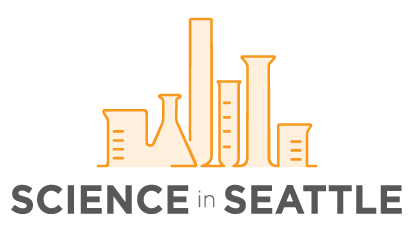Chris Large is a graduate student in the laboratory of Dr. Maitreya Dunham in the Department of Genome Sciences at the University of Washington. Chris collaborates with Postdoc Brewing, a local brewery created by former UW Biochemistry alumnus Dr. Tom Schmidlin, to study the evolution of brewing yeast strains. We sat down with Chris to discuss his love of science and beer.
Your research revolves around the repitching of yeast in the brewing process. What is this process, and why are you interested in studying it?
Good question! At the end of beer fermentation, yeast undergo a process called flocculation, where they clump together and fall to the bottom of the fermentation vessel. Brewers often collect these yeasts, store them, and eventually reuse them in a later beer ferment. This process is called repitching. Tom Schmidlin, one of the owners of Postdoc Brewing, was serially repitching yeast from one beer batch to the next, and we realized that the process represented an experimental evolution scenario. I became immediately enamored with the idea of studying the evolution of yeast during this repitching process.
Does the genome of brewer’s yeast vary considerably from other yeast species?
Absolutely. Brewing yeast are a domesticated form of wild yeast that are mostly genetically isolated. Many of the American, Belgian, and British brewer strains are tetraploid, and likely have not mated or undergone meiosis in hundreds of years! Many of these strains also have an incredibly high number of aneuploidies.
We also know from sequencing data that genetic differences exist between brewing strains, such as polymorphisms and different levels of aneuploidy. But it’s still unclear how exactly yeast evolve in the brewery, and whether there are adaptive events that result in competition, or whether most of the diversity is created from a brewer grabbing one particular strain from another brewer, leading to genetic drift. I wanted to explore how adaptation actually occurs in the brewery itself.
How did you go about answering this question?
Tom provided us with time course samples from a number of his repitchings at Postdoc Brewery. I decided to focus on some of the beers I was most interested in, like an IPA, and extracted DNA from the time point samples. I then performed whole genome sequencing in order to get a representative idea of what was happening in the whole population.
Did you discover any surprising results?
The most surprising thing, which initially worried me, was that I didn’t see any high frequency SNPs or indels in the population. My first thought was that the yeast were evolving too slowly for mutations to be captured, but I continued to look for other forms. I eventually did discover an increase in copy number of chromosome 5 from three to four copies though.
Another really interesting event that occurred was a change in heterozygosity. To understand this, you need to remember that because they’re tetraploid, these strains appear to have four separate haplotypes. Although they don’t undergo meiosis, they can undergo a form of mitotic recombination where they copy off of another chromosome. This will decrease the number of haplotypes that exist in that region of the genome, which we refer to as a change or loss in heterozygosity. When I looked at the allele frequency of these brewer strains, I discovered a change in heterozygosity in the right arm of chromosome 8. That was pretty neat, but I had no idea why that mutation would be adaptive. So I started isolating clones, and I discovered that this event had happened hundreds of separate times in the population, creating a bunch of sublineages with the same mutation that are all rising in frequency in the population. From the clones, I was able to determine that as a result of the loss of heterozygosity the yeasts lost a potentially deleterious mutation. We are following up to determine whether this was the source of the mutation’s competitive benefit.
Do you have a hypothesis for why these brewer strains evolved this way?
The native environment of yeast is in the wild. In the wild, in terms of exposure to sugars, there’s a lot of boom and bust happening. In a brewery, the yeasts are constantly given as much sugar as they could possibly want in almost pure isolation. Normally, sporulation, in which yeast undergo meiosis to form haploid cells from diploid cells, occurs through nutrient limitation. This isn’t going to happen in the brewery. This, in combination with their aneuploid nature, which could lead to inviability of spores upon meiosis, likely led to the lack of sexual reproduction in these yeasts.
You’re currently writing up this study for publication. What’s next?
I’ve done this experiment in a single brewery with a single strain, but there are hundreds of breweries and brewer strains out there. So I’m hoping to expand this experiment to more breweries with different strains and methods of preparing beer. We’re also trying to think about ways to translate experimental evolution to the brewing process. An example would be creating barcoded brewer strains where every single strain is exactly the same except for the barcode, allowing for the evolution of different lineages in the population to be tracked over time. Essentially following the population dynamics.
Thank you for taking the time to discuss your research with us, Chris! We wish you the best of luck in the remainder of your studies!

